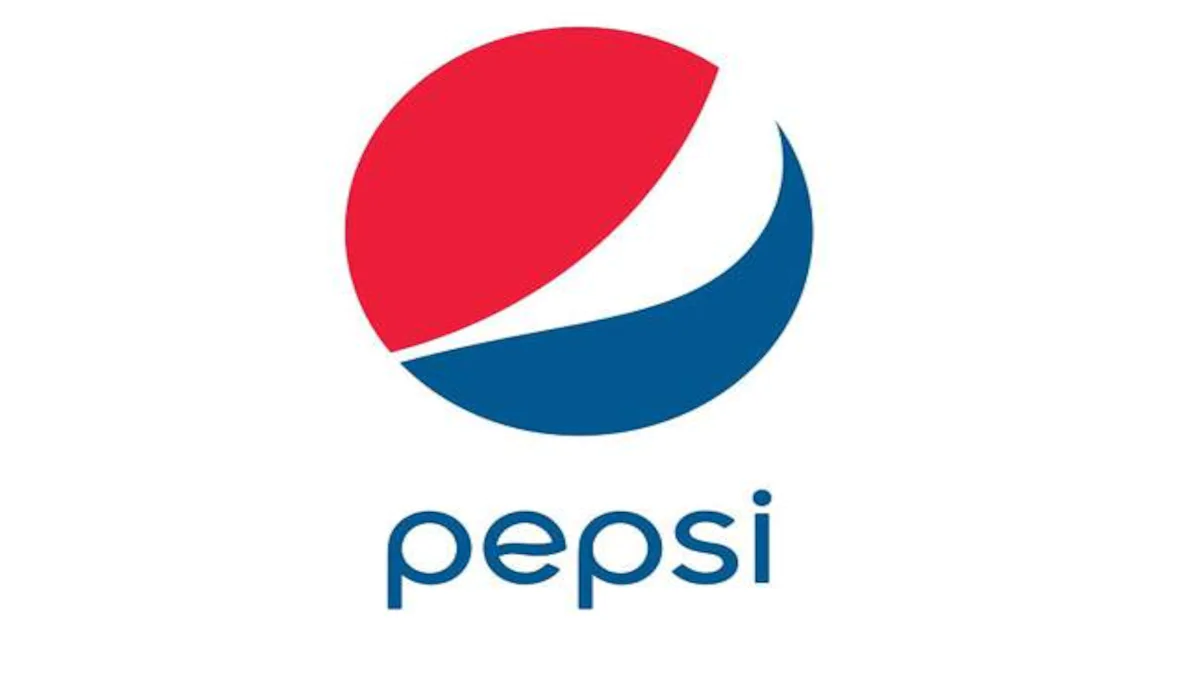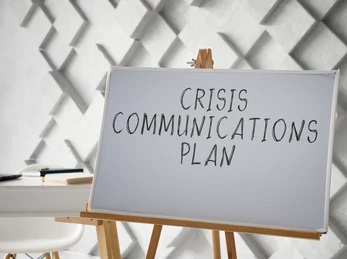 My Cart 0
My Cart 0
During a crisis, a business or enterprise needs to communicate appropriately to recover, reduce or prevent the loss. Single inappropriate communication can lead to a big loss that can be financial as well as related to the reputation of the company.
The more a company has an established reputation, the more challenging it becomes to handle crisis-like situations. There are so many success and failure stories when we look into some recent crisis communication examples. Even top-notch companies failed many times in managing crisis communication in sensitive moments. Experienced business leaders and teams know the proper way. They communicate with the stakeholders to prevent a significant loss or recover from something already happening.
A stakeholder can be anyone who opposes a company during crisis communication. From investors to media, and from customers to global netizens, they can be from any class or category. It makes it necessary to adopt the skill of managing a crisis. Here we are with some popular crisis management examples that are worth studying.
What is Crisis Communication?
Crisis communication is self-explanatory as it is a way to communicate during a crisis (mostly in businesses). However, the purpose of this communication is the major thing to understand. Communication that comes from the victim entity should have a positive impact on the stakeholders.
When an incident causes harm to the reputation of an organization, it needs to be addressed in a proper manner. Having no pre-planning for crisis communication can make things worse. With a mismanaged crisis, a company can lose all its customers and brand reputation, and sometimes investors and shareholders start turning back.
Types of Crisis:
There are several crises, and they all have to be managed differently. Because a crisis creates a very sensitive situation, companies need to be aware of their communication. Following are the major five types of crisis:
1. Technological:
A technological crisis occurs when a technical error within the company’s infrastructure causes harm and impacts its customer and investors in one way or another.
2. Personnel:
It is when someone designated for a higher position in a reputed organization gets involved in a controversy. This crisis can cause harm that goes from personal to the organizational level.
3. Financial:
This crisis is related to the monetary loss occurring to a company by any means. It could occur due to a major investment agreement withdrawal, drop in shares, fall back in product sales, etc.
4. Organizational:
This crisis is directly related to an organization’s reputation, and it could ultimately result in financial loss. In such cases, the company is blamed for inappropriately taking over-advantage of customers.
5. Natural:
A natural calamity can also damage an organization’s reputation as well as assets. Natural disasters are difficult to resist as nobody has control over them. But proper communication can help a company overcome a negative reputation after a crisis and loss.
Crisis communication is not only a core part of public relations but also a crucial aspect of business administration. Addressing the opposing party is not that easy when a company’s authority, credibility, and integrity are questioned. Now you know what crisis communication is, let’s understand its importance with some crisis communication examples.
Crisis Communication Examples:
There are dozens of crisis communication examples, and one can learn different lessons from them. Brands like Amazon and even aerospace companies like Boeing faced a crisis. Some of these brands successfully managed the problem, while some failed at it and bore monetary and brand value costs.
1. Domino’s:

Domino’s faced a significant setback of reputational harm in 2009. A video went viral in which Domino’s employees were seen preparing food orders in an unclean way. An employee was sneezing over the food order, as clearly noticed in the video. After that, all the netizens started questioning the hygiene level of Domino’s branches and their kitchens.
Tackled Successfully:
Domino’s tackled the crisis successfully and recovered from the damage caused to the brand’s reputation. You can see today how Domino’s is becoming more popular and expanding all over the world. Domino’s did this with the help of transparency and apologized. After the video went viral, the higher management took it seriously and came in front and presented the accurate information transparently. Domino’s that time, the US President apologized in a Youtube video and assured that the necessary actions were taken.
2. Facebook:

Facebook’s privacy breach scandal is one of the company’s most popular and most lose-causing crises ever. In 2018, media and regulators found that Facebook sold the private data of around 87 million users to a UK-based agency. That data was later used in the United State’s Presidential elections. After the founding of Facebook, Mark Zuckerburg had to face legal cases and presented in front of various regulators in the US.
How Zuckerburg Tackled?
Zuckerburg and the management of Facebook eventually failed to tackle this crisis. Consequently, Facebook had to pay more than a $100 billion fine to different authorities. Also, Facebook user’s lost faith which impacted a significant drop in the company’s revenue. The biggest mistake of Facebook was that the crisis wasn’t addressed at the initial stage.
3. KFC:

Kentucky Fried Chicken or KFC, the giant chicken QSR chain, faced a crisis in 2018 in the form of no chicken in 700 franchises. It happened because of the change in supply chain companies. After that, people started making fun of KFC in an ironic way. Netizens started throwing critique jokes on KFC.
Tackled Successfully:
KFC came to the forefront and answered all the customers’ questions. Those questions were full of humor, and KFC replied with a double dose of humor. It turned a sensitive moment into a fun moment, and ultimately KFC retained its credibility.
4. Amazon:

One of the biggest eCommerce companies, Amazon, has also gone through similar situations. In 2019, Amazon’s employees started opposing the company and blamed it for abusive and poor employee policies. It was all during the 2019 Amazon Prime Day Sale Festival. It impacted the company’s reputation as well as its revenue. Amazon again faced a crisis in 2021 when its warehouse in Edwardsville, Illinois, was damaged by a tornado. Six people died in this incident. The eCommerce giant was criticized once again.
Unsuccessful Planning:
Amazon faced even more criticism when it hadn’t replied to the questions being raised online. There was a complete lack of crisis communication shown in Amazon’s policies. It is considered one of the unsuccessful crisis management examples.
5. Pepsi:

Pepsi faced a crisis when its customers started finding awful things in the cans. The incident is from 1993, when more than 50 people found syringes, screws, bolts, etc., in Pepsi’s can. People started losing faith in the Pepsi brand, and a crisis was initiated.
Tackled:
Pepsi took the criticism seriously and tried to follow the best public relations practices. The brand defended itself by stating itself innocent. To be transparent, Pepsi showed the whole Pepsi soft drink preparation process through videos. In the end, the truth came out that someone in the local stores was putting such things in the cans. It proved that Pepsi was not a defaulter, and the brand retained its reputation. Pepsi’s crisis communication case study is one of the best successful examples of crisis communication.
6. Virgin:

Virgin group successfully handled a major crisis in 2014. A space tourism craft was being tested above the Mojave desert in California. This Virgin Galactic test flight crashed at that time. In this accident, one of the two pilots died, and the other was majorly injured. Due to the presence of mind and importance of humanity and public relations management skill, Sir Richard Branson took it on his own shoulders. He visited the site and showed grief for the victim. The crisis was therefore managed with his intelligence and early response.
7. JP Morgan Chase & Co.:

One of the biggest multinational investment banks, JPMorgan Chase & Co., has also faced a crisis in the past. The crisis communication case study happened in 2012 when a trader in the Bank’s operational risk management team developed fundamentally wrong investment strategies. It caused more than a $6 billion loss to JP Morgan Chase & Co. This is not the only loss; apart from this, the Bank was charged a fine of up to $1 billion by different regulatory authorities. The stock market loss was also a part of this crisis.
8. Burger King:

The biggest burger QSR chain Burger King was just about to face monetary or reputational loss in 2019. However, the patience that Burger King had at that time and the trust it showed in the Judiciary were exemplary. In 2019, a person who claimed to be vegan challenged and opposed Burger King’s “Impossible Burger.” According to Burger King, it was a meatless burger. But the man claimed that the meatless patties were cooked on the same grills used for meat patties. Burger King didn’t entertain it much and waited for the court’s decision. The decision came in Burger King’s favor, and after that, Burger King responded to it.
9. Boeing:

If you want to see the worst crisis communication examples, then Boeing’s case is the crisis communication case study that you are searching for. At the end of 2018 and the beginning of 2019, within six months, two of Boeing’s airplanes crashed, one in Indonesia and another in Ethiopia. More than 300 people died in both accidents. Firstly, Boeing made a big mistake and, without consent, stated that the crash resulted from the pilot’s experience. However, later, authorities found that it was a technical software glitch in the flights. Boeing paid $2.5 billion as a fine, dozens of its orders were canceled, regulators put a hold on its airplanes, and the stock market crash was also seen.
Conclusion:
It becomes more challenging to go ahead without a proper crisis communication plan. Businesses of all nature need crisis management systems. Crisis communication is the core part of this management and can help in many ways. No company knows when a crisis will hit it. So it is crucial to be prepared for any future harm.
Problems never arrive with a warning. That is the reason, why we need to prepare in advance. It is a fact that we face a crisis at the least expected time. If you don’t have an active team to make plans before such emergencies arrive, you will fail to deal with the situation. Crisis communication tips help each and every organization rescue with the expected crisis before they appear. The information available in this article will brief you about crisis communication and why it is important for every company.
What is Crisis Communication?
Crisis communication is the circulation of information by a company to express the crisis. This communication plan also explains about its impacts on an organization’s reputation and customers. Being a successful businessman, you must know how important is to manage the reputation of your company. Your crisis communication department understands the situation and prepares a fairly reactive plan. Transparency helps in strengthening the reputation and building trust in your marketplace. That is why the crisis communication team takes this factor seriously. As result, you receive improved satisfaction over the customer’s expectations. Crisis communication tips are one of the basic needs to protect your company from any type of context.
Why is Crisis Communication Important?
Crisis communication is also popular as a vital tool for any organization. It effectively reduces the damage and risks to an organization’s reputation. Seamless communication during emergencies works very well. A quick release of information prevents further loss of expectations. So having an effective crisis communication plan assures your company reputation management.
Crisis communication is an action plan. A consistent message flow on respective departments updates everyone for certain actions. This way your stepwise defense against the crisis beats the situation.
To get desired results in crisis communication it is important to have an experienced team. Sometimes people with different opinions refuse to believe in the power of crisis communication. There are two categories of such people and the first one believes their business size is too small to fall into crisis. The second category includes those people who believe that emergencies are not mending for them. Do you also come in any of these categories? If your answer is no, then you need a crisis communication plan for your business. If it is yes from your side then you are going to regret it later on this thinking. Come out from both categories and live in reality.
A crisis communication plan works on multiple levels to support your organization purely during a crisis. It is very important to reduce damage on your personal level, emotional, and economical levels. According to the experts, a crisis communication plan is required for the overall protection of your organization. Business crisis are full of mysteries. Only crisis management experts can understand its different aspects and important crisis communication steps. A foolproof crisis communication plan can even strengthen your market reputation. Some agencies are providing their expert crisis management services with guaranteed results.
Phases of crisis communication:
A single devastating event is enough to arise crisis in your organization. If you want to stay protected from a serious threat to your company then you need to prepare crisis communication plan. An effective crisis management categorizes a crisis into three phases. They make strategies according to the respective stage. So that actions are taken on time to prevent the risk to proceed to the next stage. That is also known for an ideal categorization to reduce the risk of damage. Below are three different phases of crisis:
1. Pre-crisis Phase:
This phase belongs to prevention and preparations by the crisis management team. They focus on the known factors which can arise a crisis for your company. Their preventional preparations reduce the risk and damages before the crises arise.
2. Crisis Phase:
At this phase team members make strategies and execute their plans as per the type and nature of crises. This phase is a real-life phase when your experts deal with the current emergencies of your organization.
3. Post-Crisis Phase:
No matter whatever was the size of your company crisis, it ends up at a moment. You cannot sit back at this situation. There are many actions required to get your reputation back. Once you are done with the management to reduce post-crisis effects, you need to think about the future as well. Yes, make a plan to ensure no such crisis appears in the future.
The entire crisis management stages come under a frame. Understanding this framework is only a start-up. Utilizing the crisis communication tips can resolve the issues 10 times faster. There are many advanced crisis management techniques to handle crucial potential and current crisis.
How to create a crisis communication plan?
If you are making a crisis communication plan then there are many things that you need to study. The prior thing about your plan needs to be it’s a well-sectioned format. Such a plan allows you to make sections according to required crisis communication steps. You can easily do changes in your plan if its structure is well organized. You can attach and detach some elements smartly as per the risk and its impacts on your business. Below are some mandatory crisis communication steps to make an effective plan.

1) Identify Risks:
The first thing that you must consider while making crisis communication plan is to ensure the purpose. If you are not aware of what type of risks are expected then how you will plan a defense communication accordingly? So do a deep analysis on different aspects that may lead to risks. Once you are done with the identification of your business risks then only you will be able to proceed further.
Also, be clear about the activation criteria of the plan. Sometimes a little confusion creates a big trouble. Means your team needs to be very clear about when they need to execute the crises communication plan. So, make a detailed summary on execution terms and brief everyone. Although when you are done with activation criteria make sure that procedures are well explained. Responsible team members should be aware of the tools they can use. Only then your team will be capable to carry out the plan in its required manner.
2) Establish a Response Team:
Collection, creation and distribution of information is the responsibility of your crisis management team. The role of this team is so important in the entire crisis communication task. They also do the monitoring to ensure the successful execution of crisis communication plans. So, your second step is to establish a response team that can work effectively with media. As we all know that media has a great power to circulate information to a vast level. The more transparently and positively your team deals with media the better you recover from the crisis.

Here you need to select the most reliable candidates to prepare a response team. Also, hand over their responsibilities with a clear layout plan. Your team members should be clear of their roles and respective fields. That means they must know who is responsible for internal communication and who will look after external communication. For better clarity demonstrations will be the best idea.
3) Identify stakeholders:
If you are an experienced crisis management person then you will never ignore all important aspects related to stakeholders. To report within the deadline the approach of stakeholders to media persons is mandatory. Your creditors, insurance companies, suppliers, vendors, and bankers participate in your stakeholders. The company can also appoint some other stakeholders to support decision-making during a time of crisis. First of all, you need to identify leader stakeholders. After that build a team to follow the instructions by the leaders.
4) Create a structure for distributing crisis information:
There should be a key massage to respond against most possible crises. To draft such a massage your crisis communication planning team must be very aware of all possible risks. Various assessments are done to analyze crises in any organization. If you fail to create an effective structure for distributing crisis information, it may drop at the initial stage. As result, all efforts made by your team will go to waste. So, the message structure must carry the following points:

• Causes of crisis
• Description on crisis
• Time table on future plans
• Compassion against victims of the crisis
• Suggestions for the protection against crisis
Also, your message body should contain the provision on privacy in the case of death until the next step is notified. Once you ensure that the structure of your crisis information is created as discussed above you need to run it. Cross verify its efficiency with your legal team as well.
5) Assign people to create fact sheets:
It is time to appoint in charge of your fact sheets. Let us first understand what exactly the fact sheet is? It is a list of facts related to your crisis. The best advantage of preparing factsheets is to prevent rumors. The exact information available in the fact sheets helps to maintain transparency.
Fewer misinterpretations mean less useless news spreads from media outlets. So, the people who have studied your risk factors can easily create a fact sheet for the crisis. Make sure that you have mentioned the deadline for preparing and handling the factsheet. The deadline of factsheet preparation depends on the type and effects of the crisis. In general terms, it makes requires in a maximum of 24 hours or a minimum of 30 minutes after the crisis appear.
6) Identify and assess example crisis scenarios:
A smart crises management team prevents chances of pressure during the action. To make your team familiar to the crisis communication steps they must take identification and assessment of crises is important. There are some common types of crises such as natural disasters and health risks to an employee. These are best to practice an example crisis scenario. This way you will set your team to perform flawlessly when crises arise.
7) Develop Holding Statements:
A holding statement is all about you and your team knowing about the crisis. It also holds the information about actions required in the term of crisis. Holding statement development supports your team’s actions with better speed and credibility. Certain high-performing companies develop a holding statement with blanks. You can fill it as per the crisis and its terms.
8) Identify and respond to common inquiries:
If it is the first time that you are making a crisis communication plan, you need to buckle up. It is very tough to answer all questions. Media people, advocates, insurance companies, and customers make inquiries in a typical manner. They use tricky ways to reveal the truck from your team. So, it is very important to practice responding to common inquiries.
9) Create guidelines specific to social media:
Teams may fail to achieve their crisis communication goals if they don’t behave proactively. Guide your team to prepare media material. That will save your time and also make you well set to tackle the situation. Whatever you retain about the crisis should be transparent but less. Because the more you express about the crisis situation the more people want to know. Along with proactive communication reactive communication is also important. Appoint the members to look and react according to the media reactions. That means you cannot stay in a corner with negative comments or news about your company. Reply to reduce negativity and improve transparency.
Tips for effective crisis communication:
How you communicate matters a lot at the time of crisis. To prevent potential harm to your business your team should follow effective crisis communication plan strategies. Below are some useful crisis communication tips to help you in planning and executing.
1) Identify and train a crisis communication team:
First of all, recruiting a team with enough experience should be your priority. Sufficient strength is a subject to look at seriously. Provide the best crisis communication training to your team. Give them live experiences to behave maturely at the time of response.
2) Respond quickly:
Making delays in responding to the crises can lead to harm to your reputation. Before the negativity or rumors spread to the next level you need to take action. Respond as quickly as you can. In today’s era, digital media and social media are so powerful. So, before others or rivals put a conclusion on their own your team should react. Give a brief on your story on the earliest note. Don’t let others take advantage on your crisis. Study different examples of crisis communication plans to enhance your response confidence.
3) Leverage your supporters:
If you have not prebuilt a community in your favor then don’t expect for support. You cannot take the effects of a crisis so lightly. Supporters are one of the basic needs to deal with crisis effects. Once your company faces any crisis, there are many people who will not stand in your favor. At that time your supporters will react as an asset. But the fact is that as a PR professional you cannot build up supporters instantly. Crisis communication in public relations supports a lot. You need to work on that from day one you utilize your crisis communication tips. Stay in touch with your regular contacts, greet them and explain about company image and its upcoming plans.
4) Establish Notification and Monitoring Systems:
Whatever has happened to you in the form of a crisis simply establish a notification regarding that. But make sure while the communication is on the run your team must monitor it. React where you need to respond. Clear doubts and rumors to make things transparent.
5) Be transparent:
An intelligent PR manager acts smartly. He thinks on the behalf of victims, rivals, media people, and more. If your team has this caliber then no one can stop him. Only then you can craft transparent communication. People are going to be very judgemental of each of your responses. But transparency is the only object that will save your company’s reputation.
6) Keep the message consistent company-wide:
Losing consistency can harm the reputation of your organization to a higher level. You have enough staff to coordinate with the media and reply to their questions. Let the teams across the company address the crisis. But they must know about the guidelines of revealing facts.
Examples of Crisis Communication Plan:
Does everyone want to know what does a crisis plan describes? Below are some examples to help you in making various different crisis communication planning.
1) University crisis communication plan:
Proactive damage control: To prepare this plan you need to follow various terms, conditions, and crisis communication steps.
Define a purpose: Natural disasters, protests, deaths, fire and injuries, and more crises participate. To define your purpose to create a plan.
Objective: Creation of procedures and establishment of resources participate for the information distribution
Constituencies: Here you need to categorize the team as per their respective tasks:
Category A will include the following:
• Students
• Parents
• Neighbors
• General Public
Category B will include the following:
• Faculty
• Board of trustees
• Public officials
Category C will include the following:
• Staff
• Alumni
• News Media
Roles and responsibilities: Guide and train the entire team to deal effectively with university crises.
2) Fatal accident crisis communication plan:
Spokesperson response: In the case of death of any passenger into a flight immediate response of a spokesperson plays a vital role. For example, in the case of flight 1380 the quick response by Gary Kelly was commendable. He handles social media channels and media very well.
3) Unexpected crisis communication planning:
Crisis communication strategy: spokesperson: If you are not aware of tide pods consumption news then think twice about their effective crisis management team. Yes, it happened to waste level. People started eating tide. It may be hard to believe but it is true that people were eating tide detergent. But once the company handled this consumption everything has become normal without a big issue arising.
4) Restaurant crisis communication plan:
The biggest example of a restaurant crisis communication plan we all know is the KFC crisis. KFC is known for its 11 chicken-based recipes. But once they were felt into an issue where they were out of chicken stock. The team has smartly released a video and other message into the media. Without making delays they apologize in public and handle the crisis situation.
5) False accusation crisis communication planning:
It happens with various different brands due to an angry or non-satisfied customer. This real story belongs to 1990. Pepsi cans were tempered into the stores. Few customers reported that they found sharp objects in their drinks. The rumours were spread all over. But the team took the charge and they released the videos of the entire canning process which was tamper-proof. This way they resolved this issue effectively.
6) Changed tactics crisis communication plan:
The crisis with United Airlines is the biggest example of how not to deal with a crisis. Blaming anyone is never a solution. Bringing changes in your strategies and plans with transparent communication can help with better results.
7) Coming together crisis communication plan:
The flight crash in 2014 was the biggest crisis example. Branson and Virgin were two responsible people who have immediately handle the situation. Their quick response was truly appreciable. Also, they connected with the media and the families of the piolets. This way they saved their entire industry from a big loss.
8) Hold the line crisis communication plan:
In 2017 Bradley Reid smartly played with social media. Just a single question asked by him was big news. He wanted to know that why his wife has to leave her 11 years old position in a company in Indiana location. Justice for Brad’s wife was trending on social media and the biggest organizations were happy to hire her.
Conclusion:
Whatever is the situation you must focus on crisis communication plan. Make your strategies stronger and up to date your employees who are responsible for crisis control. Be reactive and make sure you react on or before time. Delays will ruin all your preparations to tackle crisis.



